In the old days, Apple used to sell two different iPhones: the newest model, and the previous year's model at a lower price. A version of that same system is still in place today, only now it includes five total iPhones. Let's compare all the iPhones you'll be able to buy for the next year.
Update: We now have an updated version of this comparison that adds the new iPhone SE.
For each category, you'll see two rows of iPhones, in this order:
- iPhone 6s Plus
- iPhone 6s
- iPhone 6 Plus
- iPhone 6
- iPhone 5s
You'll still see some wireless stores and retailers clearing out the iPhone 5c (or maybe even older iPhones) from their stock, but for the next year, it looks like these are the only five iPhones Apple will be selling.
Size

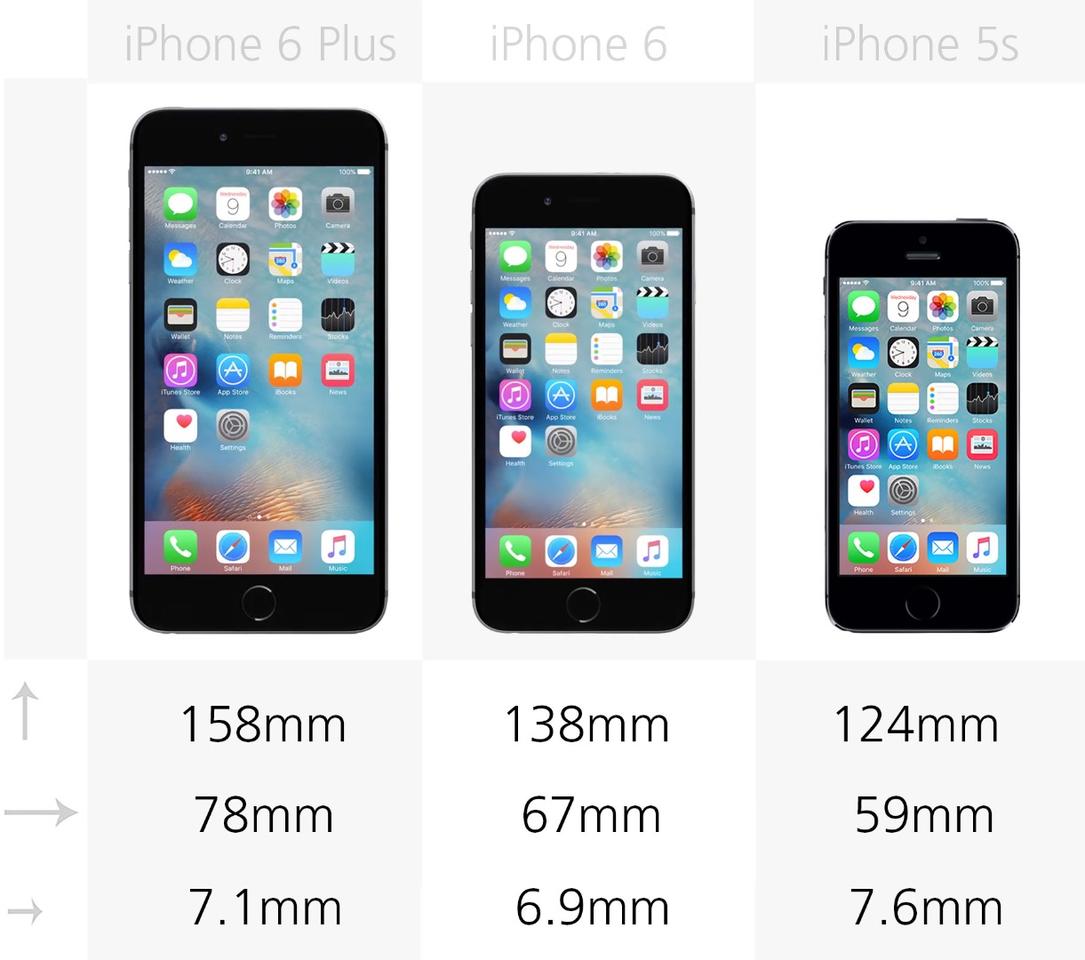
The new iPhones 6s and 6s Plus have the same height and width as their 2014 predecessors, but they are each about 3 percent thicker, respectively, than the iPhones 6 and 6 Plus.
Weight


The iPhone 6s Plus is 12 percent heavier than the iPhone 6 Plus. And the iPhone 6s is 11 percent heavier than the iPhone 6.
What's going on – isn't Apple the company that worships at the altar of lightness and thinness? Well, wait a few categories and we'll get to why the new models went in the wrong direction this time.
Build


All five phones have aluminum unibody cases, though the 2015 models have stronger (7000 series) aluminum than the 2014 ones, likely in response to the (overblown, if you ask us) "Bendgate" controversy from last year.
Colors

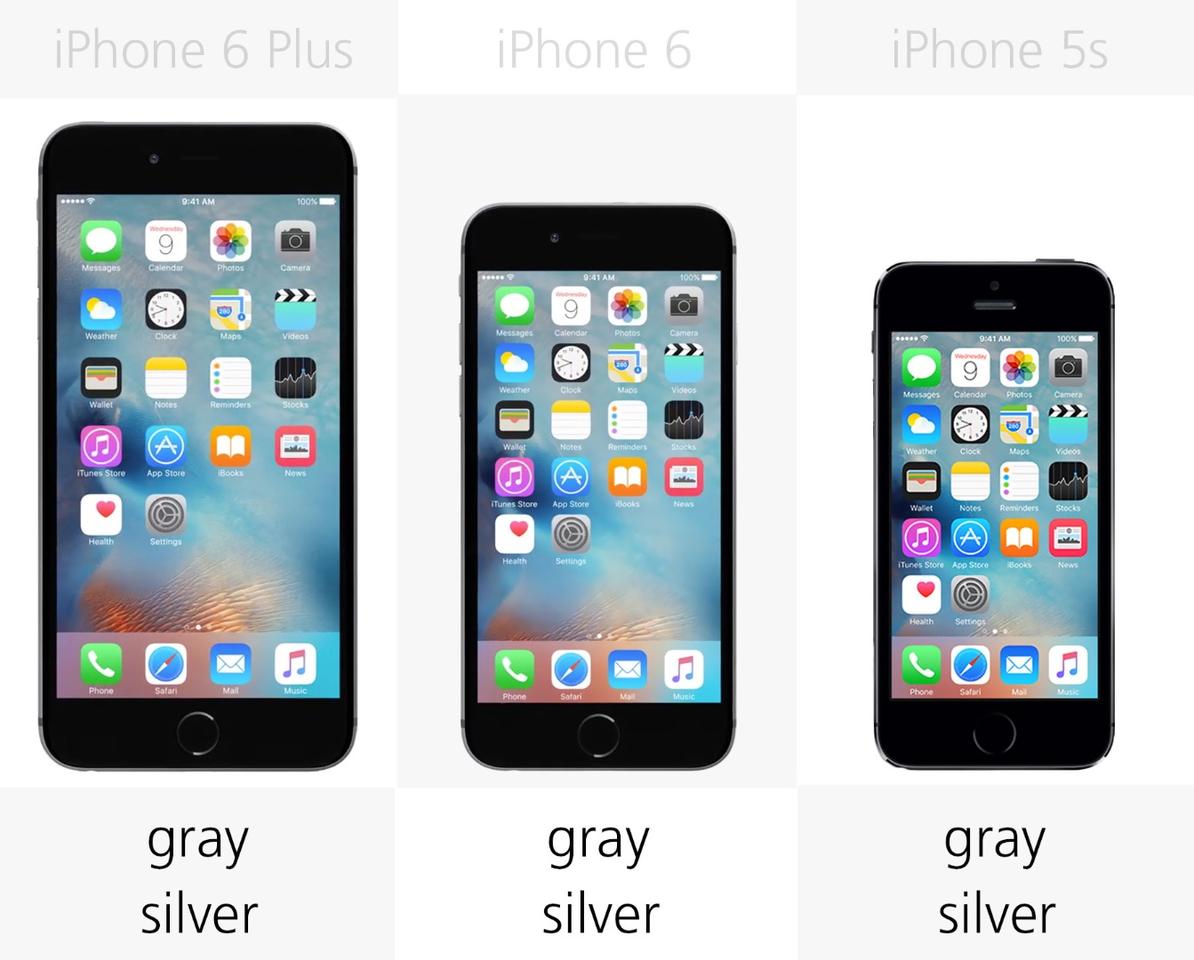
Apple added a new rose gold color option to the new models this year.
If something looks missing from the visual above, that's because Apple has stopped selling the gold models that were previously available in the pre-2015 iPhones. You can probably still find those floating around, but you'll no longer find them on Apple's online store.
Display size


This being an "S" year for iPhones, there aren't any display size changes from last year.
The two-year-old iPhone 5s is going to look puny by today's standards, though if you miss the days of smaller smartphones, it's probably your best current option in the 4 inches and below range.
Display resolution


Apple hasn't jumped into the pixel density arms race that's common on the Android side of the fence. While the Samsungs, LGs and Motorolas of the world are using Quad HD displays (and Sony is even experimenting with 4K), Apple is, for the 4.7-inch models, sticking with the same 326 PPI density that we saw in 2010's iPhone 4.
... the two phablets do, however, jump up to a sharper 1080p/401 PPI.
Display type
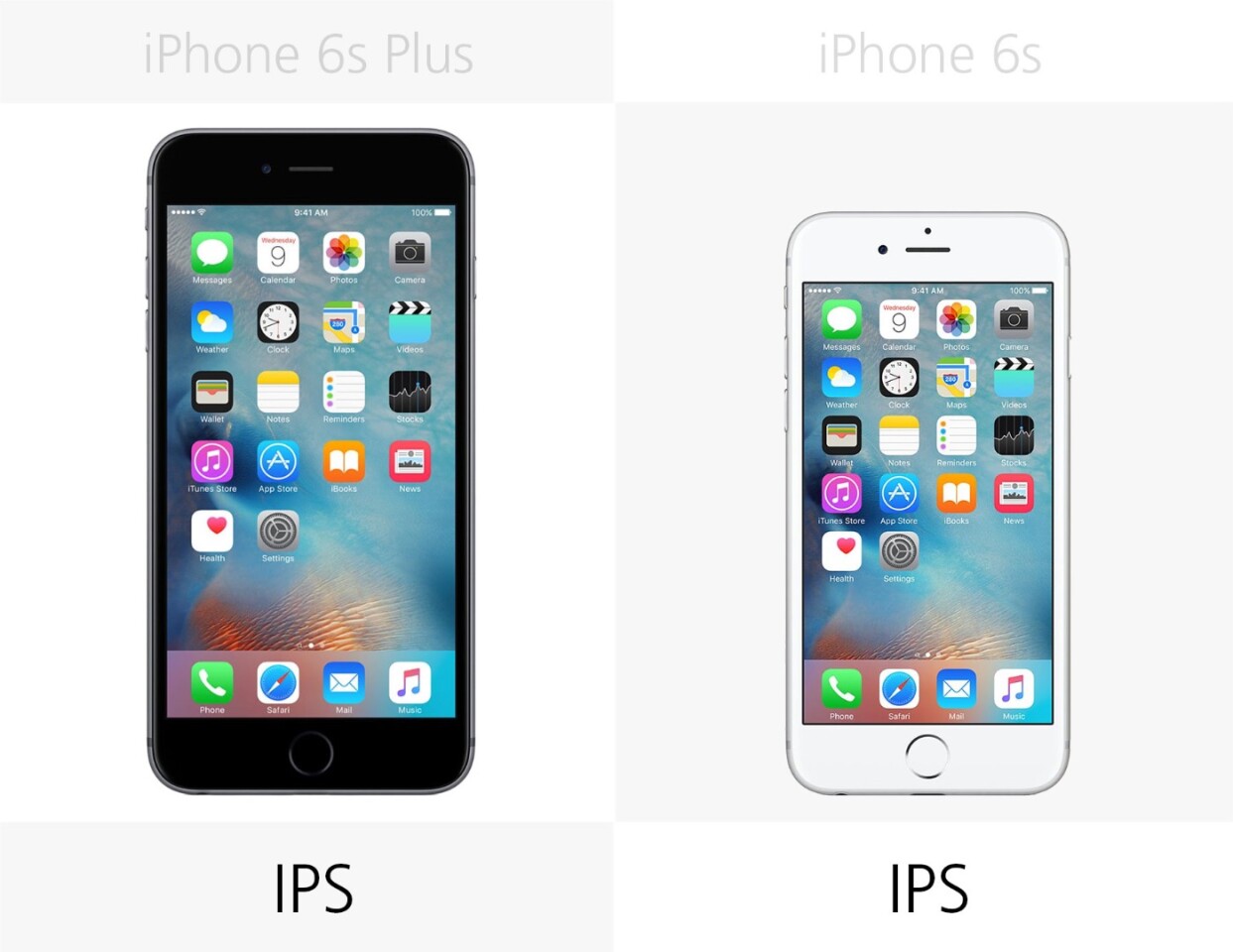

Though the Apple Watch uses an AMOLED screen, Apple is still using IPS panels in its iPhones.
3D Touch display


This is where we solve the mystery of those thicker and heavier builds, as the iPhone 6s and 6s Plus have an extra display layer that enables the new 3D Touch feature.
3D Touch is a next-gen version of the Force Touch tech that we saw in the Apple Watch and latest MacBooks. You can tap the screen like you would on any smartphone, but the iPhone 6s pair will also recognize a press on the screen, as well as a second-level press that's deeper than that.
At first it may sound a bit ... unnecessary (and it still could be), but Apple's implementation reeks of the company's trademark intuitiveness and simplicity: Peek and Pop.
Peek is a first-level press, which gives you a little preview. Say you're in your inbox and want a closer glance at an email, or you just snapped a pic and you want to take a quick look at the photo you just took. Press your finger on the email in your inbox and a pop-up preview of the full email will show. Likewise, a press on the photo thumbnail will pop it up for a closer look (or Peek).
If you got all you needed from the Peek, then release your finger and the pop-up will go away – back to your inbox or the camera view. But if instead you'd rather jump all the way into that content, then you can press even farther on the screen to "Pop" into that email or photo (for good this time).
3D Touch is also used to let you turn the iPhone's virtual keyboard into a trackpad. Press on the keyboard, and slide your finger around to move a cursor to more easily edit text.
Touch ID


Though Apple still sells a few iOS devices that don't have Touch ID fingerprint sensors (6th-gen iPod touch, iPad Air 1 and iPad mini 2), the company has now phased out all non-Touch ID iPhones.
The 2015 iPhones do, however, have more advanced Touch ID. Apple says they can register your fingerprint up to twice as quickly as the previous Touch ID (which was already pretty damn fast).
Apple Pay


Though the iPhone 5s has a Touch ID sensor, it lacks the secure element chip necessary for Apple's mobile payment service, Apple Pay.
System-on-a-chip


Just two years after Apple introduced the world to 64-bit mobile computing, all of its current iOS devices now run 64-bit chips.
We'll have to wait for benchmarks to know the cores and clock speeds for the processors in the A9 chips; we'll update this comparison when we get those.
RAM


The 2 GB of RAM in the latest iPhones isn't yet confirmed, but several signs are pointing to that (and we'll update in the unlikely case that our benchmarks tell a different story).
Storage


Apple's entry-level 16 GB storage is getting harder to recommend, as app sizes have grown through the years and photo and video files will be bigger on the new models (though iCloud can help out some there). You may want to weigh the option of paying US$100 more for the 64 GB tier, which should be plenty for most people.
Similar to the missing gold color options in the older options, we're also leaving out some previously-available storage tiers for the iPhones 6 and 5s. These are the only tiers Apple is offering on the older models from now on.
Battery

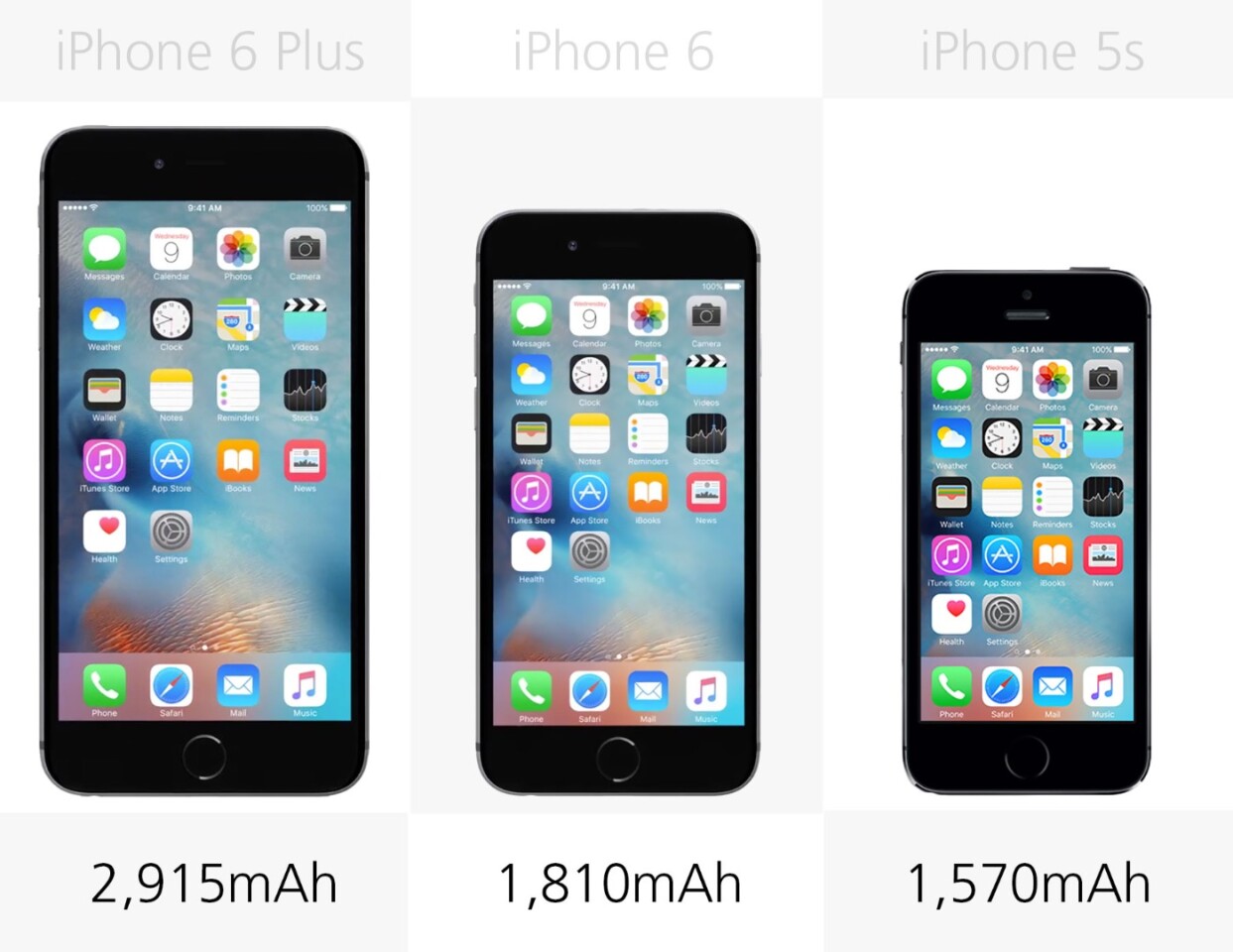
We don't know the battery capacity of the iPhone 6s Plus, and we only "know" the capacity of the smaller 6s because of a glimpse in an Apple-made product video.
Though it looks like at least one of the new models holds less juice than its 2014 equivalent, Apple is still providing the same battery life estimates as it did for last year's iPhones (most likely courtesy of power management in the A9 chip).
Fast charging


Most Android flagships now support quick-charging tech, but Apple has yet to go that route.
Wireless charging


Ditto for wireless charging, something that picked up steam with Samsung's 2015 flagships.
Camera megapixels

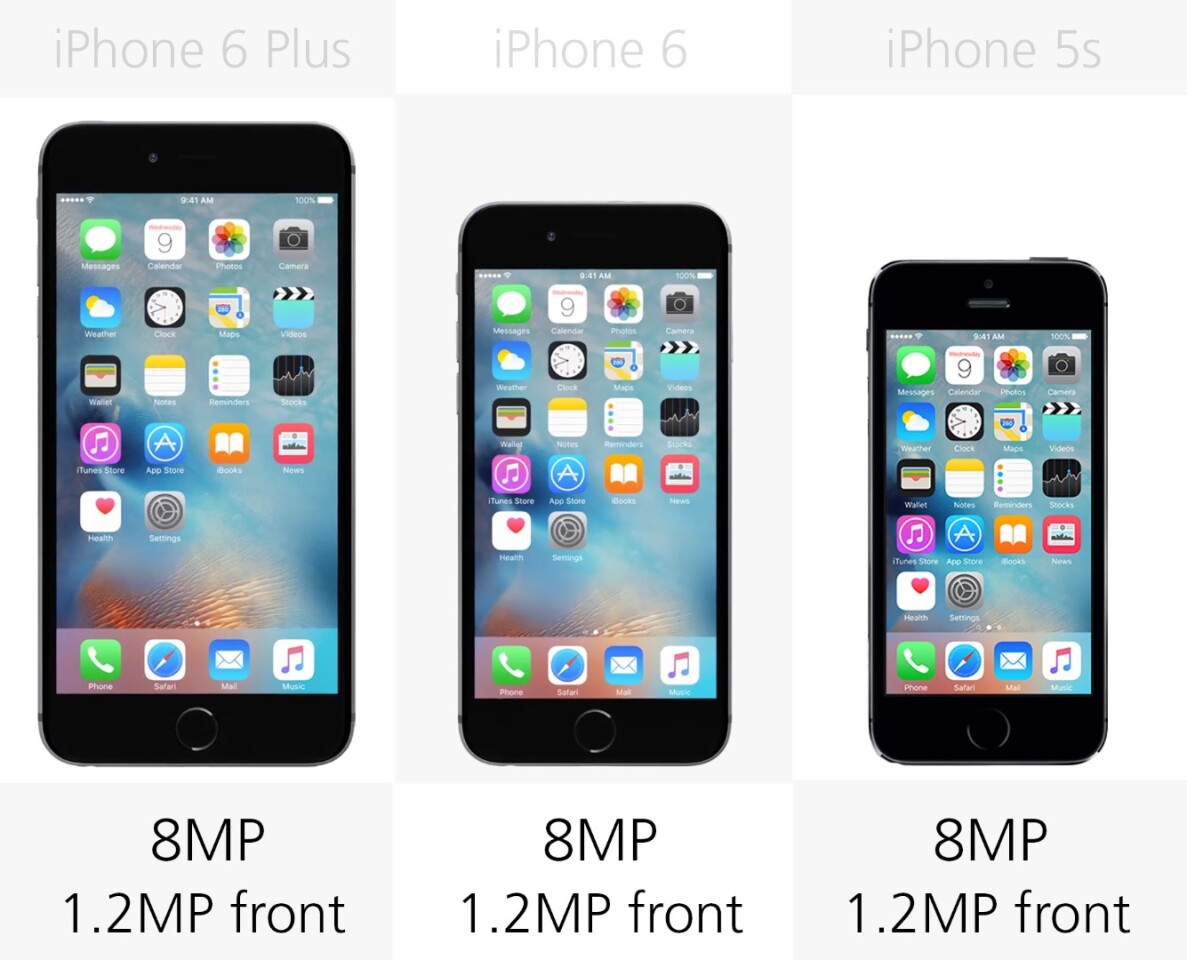
The 6s iPhones mark Apple's first megapixel jump since the iPhone 4s in late 2011. iPhone camera quality has been improving steadily every year, though, and Apple has prepared us to expect the same this time.
Camera aperture (rear)

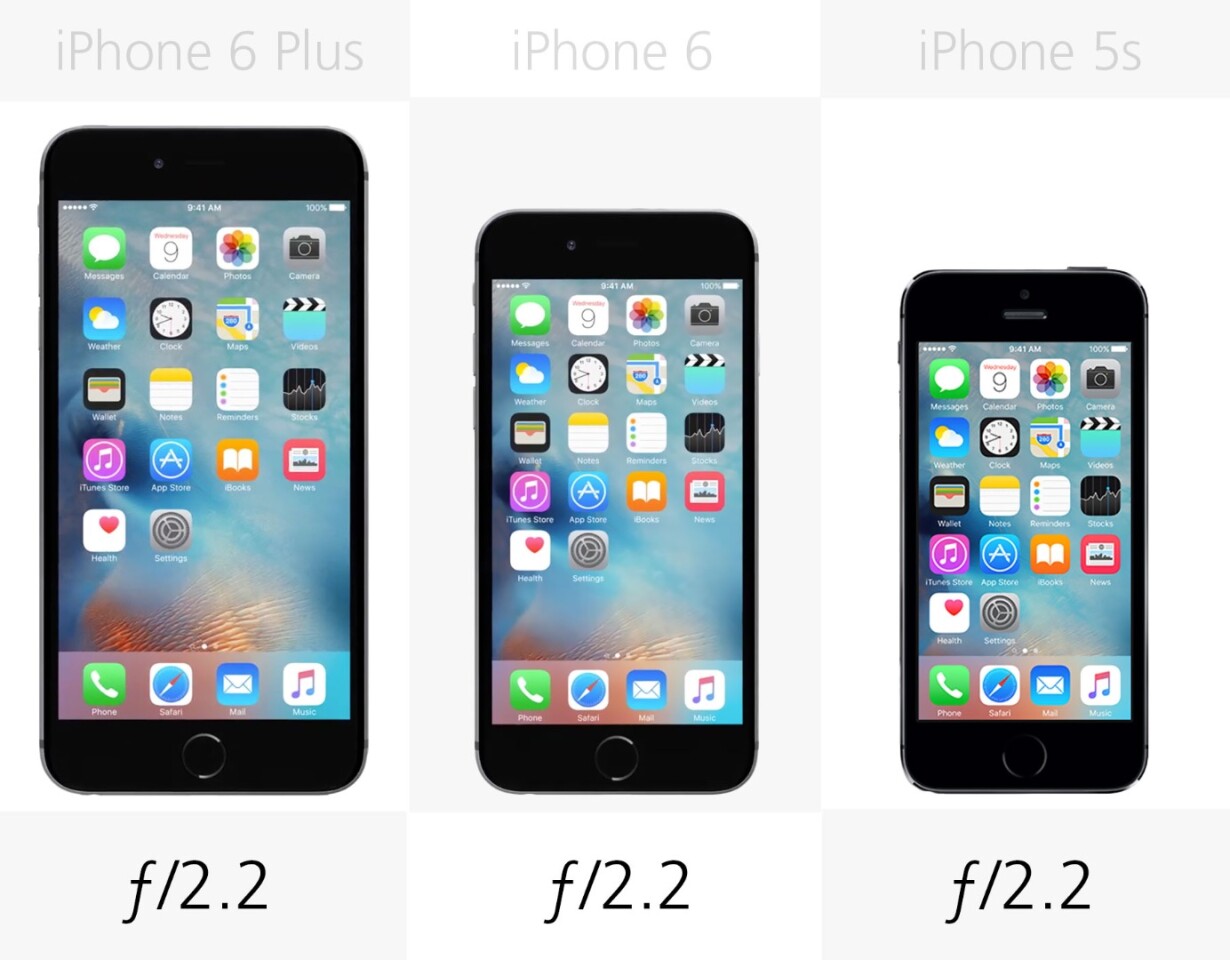
The new iPhones' improvements won't come from aperture, though, as it's been the same ƒ/2.2 through these last three generations.
OIS


Only the two phablets have Optical Image Stabilization built into their rear cameras. Maybe this is because Apple thinks a large phone is more likely to wobble, but – whatever the rationale – you may have less leeway for shaky hands in the smaller models.
Software

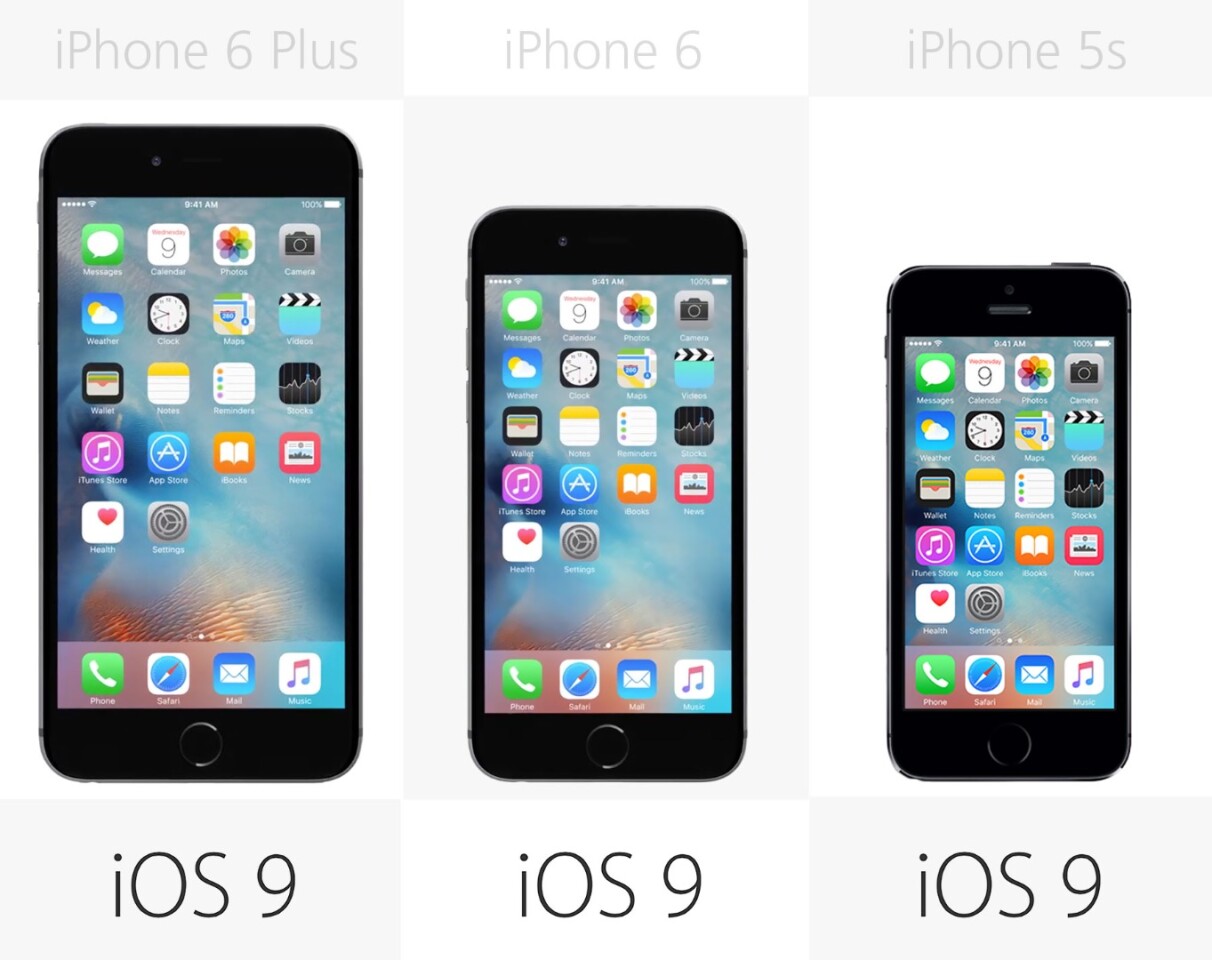
All three generations of iPhones for sale today get the new iOS 9 update.
Release


The iPhone 6s and 6s Plus release on Friday, September 25.
Starting price (full retail)


Today there are more ways than ever to buy an iPhone. There's the old two-year contract, though those are getting phased out more and more all the time (thanks to T-Mobile's recent disruption of the US wireless industry). Then there are installment plans, where you pay the totals you see above over (usually) 24 months. And of course you can also just shell out these full amounts outright.
Apple is also now offering its own unique iPhone Upgrade Program, where you pay a monthly fee (starting at US$32.41 per month for the 16 GB iPhone 6s) and will always have the latest iPhone. When Apple releases new models next year, you just trade in your 6s or 6s Plus and continue to pay the same fee for the newer model (and so on).
Stay tuned for much more from Gizmag on the new iPhones, including full reviews. You can also check out our old reviews of the iPhone 6 Plus, iPhone 6 and iPhone 5s.
















































